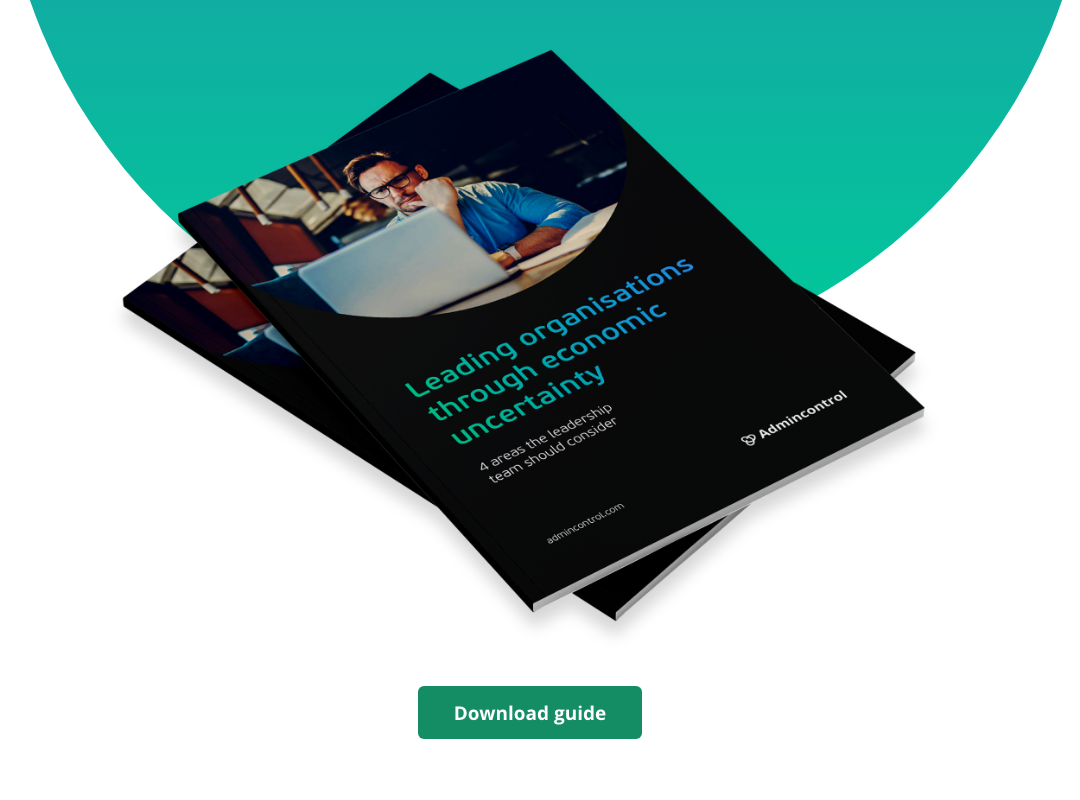10 steps for CEOs to ensure diversity and inclusivity in the boardroom and beyond
Boards that lack variety are in danger of being blinkered, echo chambers out of touch with their staff and the real world. In the face of rapidly evolving marketplaces, a lack of personal diversity and inclusive corporate culture isn't just a minor setback; it's a gaping void that can cripple your business's adaptability and innovation.
To help them embrace change, CEOs are being called upon to champion diversity and inclusivity (D&I) as part of their role as custodians of corporate decisions and strategic direction.
Why is board D&I important?
Company-wide D&I starts in the boardroom. The composition and procedures of the board sends a strong signal about what the company values. If the board doesn’t demonstrate D&I, then it may lack credibility with management and fail to set an equitable culture for the rest of the business. It’s also in danger of missing out on a key competitive advantage.
Within the board, individuals bring their own set of skills, awareness and understanding as well as functional knowledge and expertise to their executive role. A diverse board can see things from multiple perspectives. It can tackle issues and ideas from many different angles, giving it a more rounded view of risks and complexities and leading to better decision making and outcomes. This results in a broader vision and heightened innovation.
Both Europe and the UK have introduced policies that promote change at the executive level. The Women on Boards Directive introduced by the EU in November 2022, for example, is a key legislative initiative to improve the gender balance among directors of listed companies. This tasks them to achieve 40% female non-executive directors or 33% female executive and non-executive directors by June 2026 or else face national sanctions. In the UK, FTSE 350 companies were given a target of 40% women on the board by 31 December 2022 but with no sanctions, relying instead on reputational fall out to motivate businesses.
It's a trend which is gaining momentum globally. For example, in Australia, listed companies now have corporate governance responsibilities designed to promote diversity and inclusion. Meanwhile, in Japan, the Corporate Governance Code incorporates measures spanning gender diversity. And in the US, there are currently moves to renew efforts to improve corporate board diversity with the introduction of the Improving Corporate Governance Through Diversity Act of 2023.
More than a numbers game
Diversity transcends gender. In a globalised world, integrating varied races, ethnicities, abilities, orientations, backgrounds, and skills isn't an option—it's a strategic imperative for holistic growth.
And it’s not just CEOs that have a vested interest. Employees and customers are advocating for greater D&I and more visible demonstration that it is entrenched in company and brand values. A good example of this is Sephora; after receiving feedback from customers, it implemented its "We Belong to Something Beautiful" campaign, pledging to highlight and cater to all its diverse customer base.
Stakeholders and investors can also participate in the drive for change by questioning the D&I practices of companies during annual meetings and pressing for better representation in leadership roles. Investment firms like BlackRock, for instance, have started to emphasise the importance of D&I in the companies they invest in.
However, CEOs can’t simply treat D&I as a box ticking exercise in response to legislative, societal and investor pressure. It must be the result of an inclusive corporate environment that comprises policies, procedures, communication channels, and compensation that benefit all.
While this may seem challenging for already burdened CEOs, it makes smart business sense, and the results are worth it.
According to a report by Deloitte, when operating under an inclusive culture and talent practices, organisations can generate up to 30% higher revenue per employee, are more profitable than their competitors and become 8x more likely to achieve positive business outcomes.
Meanwhile, Gartner suggests that inclusive teams operating in high-diversity environments improve performance by up to 30%. Research has also shown that companies that create an environment where all voices can be heard are 6x more likely to be innovative and agile.
However, a PwC survey reveals that while D&I is a stated value or priority area for 76% of organisations, 33% of respondents still feel diversity is a barrier to employee progression.
It’s obvious that there is still much work to be done. So what can CEOs do to make sure the board reflects and fosters D&I?

Here are 10 steps to help inspire positive change:
- Assessment and awareness:
Before acting, it pays to know where you’re starting from. Take time to do a self-assessment of current inclusion governance practices, what barriers are holding you back and what enablers are already in place. Consider designating an inclusion champion or forming a committee to help formulate a plan, progress initiatives and help raise company-wide awareness, promote an inclusion culture and break down diversity barriers. - Leadership commitment:
Lack of accountability and pressure from other priorities can lead to a half-hearted commitment by management. A good way to escalate the importance of D&I is to align it with leadership engagement and outcomes and make it part of the performance management review. At P&G 10% of executive compensation is linked to diversity goals. - Recruitment and nominations:
Unconscious bias can be a CEO’s Achilles’ heel. When it comes to recruiting new board members or succession planning, make sure you adopt an inclusion and diversity lens to keep your strategy on track and ensure you comply with legislative requirements. As a CEO make sure you nominate/select inclusive leaders and encourage others to do the same. If needed, suggest development of new board positions specifically focused on D&I, leadership and workforce development. Mastercard, for instance, has a Chief Inclusion Officer who continually evaluates and reports representation of people at all levels of the business. - Education and training:
Members of the board may be unaware of their D&I responsibilities. Make sure they’re prepared by supporting knowledge and skills-based training and seminars to increase leadership competence. Help them to develop the skills necessary to identify specific gaps in the board and across their functions and provide the resources and tools they need to put D&I strategies into action. A champion of this approach is Bayer, known for years for its effective eLearning modules and other non-traditional strategies for D&I. - Inclusive communication:
Ensure your organisation has a corporate D&I charter that embeds inclusive thinking, language, and actions into all relevant board proceedings and company practices. And make certain that communications that come from you and the board comply. Create opportunities within your social and internal comms, to publicly acknowledge and celebrate D&I achievements. Where corrective actions and plans have been identified, call for board and companywide support for improvement and to help mitigate non-inclusive behaviour. It’s something that Apple takes very seriously, even among its developer communities, where it is working to remove and replace non-inclusive language within Xcode, platform APIs, documentation, and open source projects. - Mentorship and sponsorship:
It pays to have a long-term vision for the board, its structure and participants. Imagine what you’d like the board to look like in one, two, five years’ time and set D&I goals accordingly. Use your board influence to continuously ask what more can be done to ensure people at all levels and all backgrounds have an opportunity to be nurtured into senior management levels. Through mentorship and sponsorship you can ensure you have the right leaders for the future. A great example is marketing research company, Nielsen’s diversity mentoring program, which matches mentors and mentees of all backgrounds across different functions, lines of business, and job grades. - Accountability and measurement:
If you want your initiatives to be successful, then monitor and measure them. Make sure to include targets and continuous evaluation to keep your board D&I strategy on track. It also keeps leadership engaged and ensures that they prioritise it and give it the time and resources it needs to succeed. - Resource allocation:
Use tools to help monitor, communicate and control what happens in the boardroom and free time for D&I initiatives. For instance, secure software programmes like Admincontrol’s Board Portal can help optimise resources and reduce the board’s administrative burden by facilitating more efficient record keeping, admin processes and procedures. It provides the CEO with a safe channel to manage interactions and document sharing among executives and key stakeholders and is especially useful for boards that operate remotely or from multiple locations. - External partnerships:
There is plenty of evidence of great D&I initiatives across all industries and sectors. CEOs should be ready to identify and share good practice from outside as well as inside the organisation. Another great way to advance your D&I agenda is working with external partners to plug any gaps in knowledge, expertise or skills or to simply ask them to share their own experiences of what makes great D&I with your board. - Continuous evaluation and improvement:
Influence the types of metrics used to track the progress and outcomes of inclusion efforts and the order of priority of these metrics. Prioritise inclusion on the board agenda by regularly scheduling time during board meetings to discuss and monitor diversity and inclusion progress and goals. Where organisational inclusion objectives are not being met, the board can work with management to develop plans for corrective action.
Championing D&I is both intelligent and rewarding
Boards have a direct impact on the success of D&I within the organisations they serve. CEOs can shape D&I culture by ensuring that the board itself is diverse and encouraging a culture of inclusivity.
This means taking efforts to:
- build the board candidate pipeline and eliminate director bias
- encourage board members to challenge assumptions and perspectives
- set the tone and demonstrate D&I commitment
- keep inclusivity on the board agenda by
- continually asking the right questions
- monitoring how the business is responding
- championing initiatives to help improve D&I performance.
Ensuring room at the top for wider representation can be a challenge for CEOs but get it right and you and your business can reap the rewards – improved performance and decision-making and reduced risk.
When CEOs take ownership of the D&I agenda, they send a clear message to leadership about its importance, not just for legislative compliance, but as part of a broader obligation to staff and the public. If you’re not already on the path to diversity and inclusion, it’s time to step in, shake it up and get mixing.




